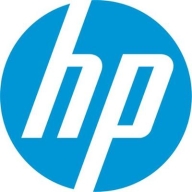

HP Wolf Security and OpenText Core Endpoint Protection are competitors in the cybersecurity space, focusing on endpoint protection. OpenText stands out with its comprehensive features, making it seem preferable despite its higher pricing.
Features: HP Wolf Security emphasizes advanced malware protection with threat isolation and recovery capabilities. OpenText provides robust anti-malware, data loss prevention, and vulnerability scanning features, covering a wider range of threats and offering extensive security.
Room for Improvement: HP Wolf Security could benefit from improvements in its deployment flexibility, threat detection speed, and remote management features. OpenText may enhance its user interface, reduce resource consumption during scans, and simplify its configuration process to improve overall user experience.
Ease of Deployment and Customer Service: HP Wolf Security offers a straightforward deployment model with accessible resources and quick customer support, ensuring an efficient setup. OpenText provides a flexible deployment structure, although it requires more time and resources to implement, with extensive support available during the deployment phase.
Pricing and ROI: HP Wolf Security is competitively priced with a focus on delivering cost-effective solutions and a positive ROI over time. OpenText, though more expensive, provides significant ROI through its enhanced security features, potentially leading to long-term savings by reducing security incidents.
| Product | Market Share (%) |
|---|---|
| HP Wolf Security | 6.3% |
| OpenText Core Endpoint Protection | 0.8% |
| Other | 92.9% |

| Company Size | Count |
|---|---|
| Small Business | 3 |
| Large Enterprise | 5 |
| Company Size | Count |
|---|---|
| Small Business | 35 |
| Midsize Enterprise | 2 |
| Large Enterprise | 2 |
HP Wolf Security is a comprehensive cybersecurity solution that bolsters your organization's cyber-resilience on multiple fronts. With its full-stack security approach, it ensures layered protection from hardware to the cloud, providing a robust defense against cyber threats. HP Wolf Security introduces endpoint isolation, a cutting-edge feature that effectively halts threats that may go unnoticed by Next-Generation Antivirus (NGAV) and Endpoint Detection and Response (EDR) systems. Moreover, it extends its security coverage to printers, equipping them with advanced detection and self-healing capabilities to further safeguard your digital ecosystem. This integrated solution streamlines IT and security risk management, resulting in fewer alerts and false positives, and reduces the time and effort required for endpoint incident analysis and remediation. Notably, HP Wolf Security prioritizes productivity, allowing you to manage risk without disrupting the user experience, enabling worry-free work from anywhere, and offering rapid IT disaster recovery at scale.
OpenText Core Endpoint Protection offers cloud-managed endpoint security with AI integration, providing real-time protection and lightweight performance. It ensures low system impact, seamless cloud integration, and cost-effective security solutions for various devices.
OpenText Core Endpoint Protection is a comprehensive endpoint security platform utilized by managed-service providers for antivirus and firewall functionality across servers, workstations, and mobile devices. It employs AI for robust threat detection, integrating with cloud applications for real-time updates. Multi-layered security features include malware protection, network defense, and DNS protection. Although connectivity and threat reporting need improvement, this platform extensively supports remote device management and integrates efficiently with Active Directory policies.
What are the key features of OpenText Core Endpoint Protection?OpenText Core Endpoint Protection finds application in industries requiring stringent data protection and peace of mind over device security. Managed-service providers implement this for comprehensive antivirus and firewall features, safeguarding multi-device networks. It is particularly useful for DNS protection and integrating with Active Directory policies, enabling secure yet flexible operations across sectors.
We monitor all Endpoint Protection Platform (EPP) reviews to prevent fraudulent reviews and keep review quality high. We do not post reviews by company employees or direct competitors. We validate each review for authenticity via cross-reference with LinkedIn, and personal follow-up with the reviewer when necessary.